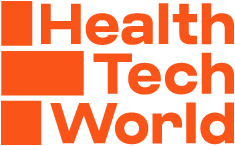
By Ruby Kuzemko, Healthcare Lead at Cloud Gateway
Patient care is dependent on secure and reliable connectivity, which means healthcare networks must be both adaptable and robust.
As a result, a shift is underway, and healthcare organisations are moving away from rigid legacy infrastructure toward more flexible, platform-neutral architectures.
As healthcare systems expand and patient demands increase, the ability to scale digital infrastructure without service disruption and without compromising security has become a critical priority.
At the heart of this transformation is a heightened focus on interoperability, threat resilience, and secure data flows – ensuring that clinical operations continue smoothly even during infrastructure upgrades or cyber incidents.
However, scalability isn’t just a matter of adding capacity.
It requires rethinking how connectivity, visibility, and control are managed across hybrid and often fragmented environments.
So, what do healthcare organisations need to consider when building a modern networking strategy with security and scalability built in from the outset?
Mission-critical by design
Today’s NHS IT teams operate in a high-pressure environment where the stakes are incredibly high.
As the demand for digital grows, they are increasingly prioritising mission-critical systems, which are essential to patient safety and operational continuity.
To meet these needs, networks must do more than just connect systems.
They must enable digital innovation without compromise – supporting advanced clinical applications and enabling seamless data exchange – but also provide the strategic assurance required by healthcare organisations.
Crucially, in this context, security cannot be treated as a mere feature.
It must be a foundational principle built into existing and new networks and not just bolted on in response to crises.
Adopting frameworks such as Zero Trust from the outset ensures that security is embedded into every layer of the network, safeguarding sensitive data and maintaining the integrity of critical healthcare services.
Building infrastructure for resilience, scalability, and security

Ruby Kuzemko
Deterring and protecting systems from security threats and growing operational demands has become the top priority for healthcare organisations when considering new infrastructure, and a proactive approach to secure, scalable, and flexible connectivity has become essential.
Traditional healthcare infrastructure often proves too rigid or siloed to keep pace with the dynamic requirements of modern care delivery, particularly when real-time data exchange and system interoperability are crucial.
To support evolving clinical and administrative needs, healthcare networks must be designed for seamless scalability, ensuring that services can expand without operational downtime or security compromises.
This means embracing platform-agnostic solutions capable of bridging legacy systems with modern architectures, reducing integration friction and enabling uninterrupted, high-quality care.
In this context, infrastructure isn’t just an IT concern – it’s a strategic necessity for resilience, efficiency, and patient safety.
Could modern network technology provide a solution?
Fortunately, there is a range of new network solutions that have emerged in recent years to help healthcare organisations overcome these challenges.
Unlike many legacy systems, these solutions offer more flexibility, scalability, and as a result enhanced security.
One promising model is Network-as-a-Service (NaaS) – a subscription-based, cloud-driven model that promises to streamline network management, reduce complexity, and redefine how networks are built, maintained, and scaled.
Instead of investing in costly hardware and infrastructure (or managing complex infrastructure in-house), organisations can consume network services on demand and use NaaS providers to access and configure their network resources through a flexible, scalable, and user-friendly platform.
This model could offer healthcare organisations a powerful way to meet rising operational and regulatory demands.
With real-time visibility into data flows and centralised policy control, NaaS empowers IT teams to enforce security protocols consistently, identify anomalies quickly, and ensure compliance with evolving healthcare regulations.
This level of insight not only supports better governance and auditability, but also reduces the risk of data breaches – crucial in an environment where patient privacy and trust are paramount.
Equally important, NaaS simplifies network deployment at a time when many healthcare organisations face resource constraints and complex procurement cycles.
With a cloud-based, consumption-driven model, NaaS significantly shortens time-to-value – enabling faster rollout of secure, scalable connectivity without the overhead of traditional infrastructure builds.
This agility helps organisations respond quickly to changing needs – whether opening new care sites, integrating telehealth services, or supporting new applications – while maintaining operational continuity and patient safety.
In short, NaaS delivers both the strategic flexibility and technical assurance modern healthcare demands.
A stitch in time
The future of health services will depend on how effectively systems can evolve while safeguarding trust, protecting data, and delivering uninterrupted service to those who need it most.
The reluctance to replace legacy systems within the NHS lies in budget constraints and the risk of a disrupting service.
But with networks that are quickly evolving and easily deployed, flexibly priced models are vital for healthcare organisations looking to future proof and safeguard against security risks.






